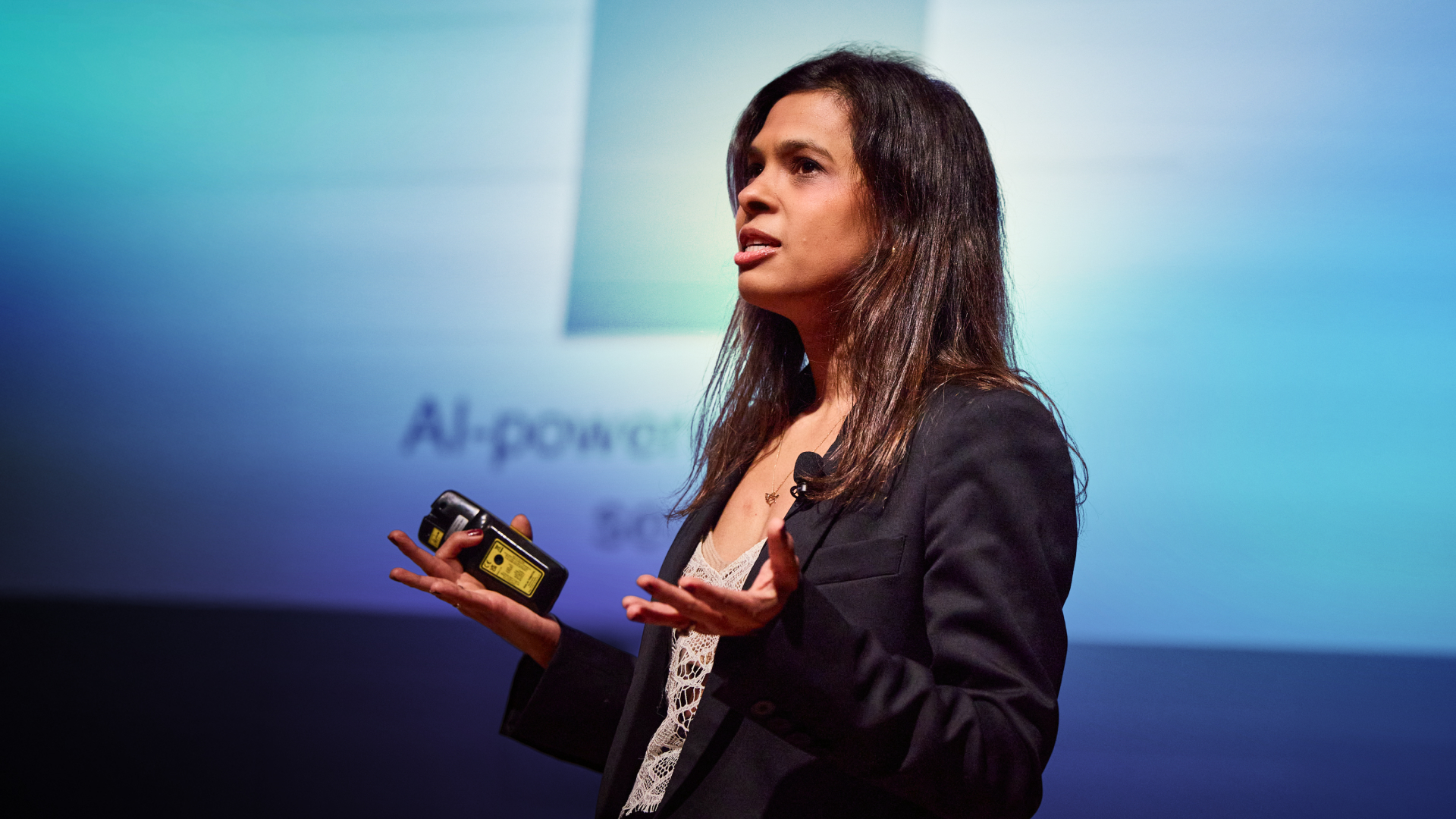Ross vs the AI hype: her shocking prediction revisited
At Livewire Live in 2024, Antipodes’ Vihari Ross made one of the boldest calls on stage. While global markets were infatuated with artificial intelligence and mega-cap tech, she argued the bigger, longer, and more foundational cycle would be the energy transition.
A decade-long capex boom, driven not only by technology but by national security, geopolitical competition, and massive fiscal incentives.
Twelve months later, she believes that call is playing out and that the market still hasn’t woken up to the scale of the opportunity.
“We are at the foothills of a significant capex cycle that is being overlooked by investors, which suggests meaningful opportunities ahead.”
In this follow-up, Ross pinpoints where investment is accelerating, where investors may be complacent, and why she believes decarbonisation, not AI, will ultimately be the defining capital cycle of the decade.
One year on, we sat down with Ross to revisit her thesis, assess whether policy and capital are moving as anticipated, and understand where she believes investors may be overlooking the next major leg of this cycle.

Europe steps on the fiscal accelerator
The energy transition was always going to be policy-led. Ross says Europe’s response over the past year has been more decisive than markets expected.
“The Trump administration has galvanised Europe in particular, but also China, into action.”
Germany has been the biggest surprise, pivoting from fiscal conservatism to aggressive investment across defence and infrastructure.
“Germany has announced an increase in defence spending alongside a €500b infrastructure package to upgrade transport, energy grids and housing over the next decade. This fiscal push equals roughly 3% of GDP and could add 2% p.a. to growth – a major shift in growth for this economy.”
And the momentum isn’t isolated. Europe is building long-cycle policy scaffolding, not short-term stimulus.
“The European Commission has also set policy that should see defence spending reach 3% of GDP, and NATO has an even more ambitious long-term target of 5%.”
And there are already signs of market validation.
“European defence stocks have been some of the best performers this year.”
A region long associated with slow growth and budget restraint is now laying the foundations for a structural investment cycle centred on energy security, industrial capacity, and defence.
China: execution at unmatched scale
If Europe has accelerated, China is already deep into execution and at a scale the rest of the world can’t match. Ross notes that the country is achieving renewable milestones years ahead of expectations.
“China is on track to source 40% of its power from renewables by the end of 2025, implying it’s likely to hit peak thermal coal in 2024."
Wind is becoming China’s renewable baseload, driven by geography and policy design.
"This rapid ramp-up, particularly in solar, requires significant investment in long-distance transmission... Today, there’s a greater focus on wind as it’s the closest proxy to renewable baseload capacity – with China’s geography (ocean, desert, mountains) the wind is always blowing somewhere.”
The scale is breathtaking:
“In 2024 – 2025 alone, China has added a ‘Japan's worth’ of solar and wind output - Japan being the fifth largest country by power consumption globally. From 2023 to 2025, China connected nearly as much solar capacity as the entire world had at the end of 2022.”
And China’s dominance isn’t just domestic, it is industrial.
“The scale of the Chinese decarbonisation supply chain is unmatched: China’s annual solar and wind installations are roughly double the rest of the world combined, and China dominates the global supply chain for batteries, solar panels and grid equipment.”
The energy transition, in other words, will not be built without China, and China will continue to expand its leadership.
Geopolitics, valuation and the China opportunity
Despite geopolitical noise, Ross argues the market’s pricing already reflects the risk and that’s creating select opportunities.
“Geopolitical tensions have risen globally, so protecting against this tail risk means staying disciplined on valuations. Arguably, this is already reflected in Chinese equities trading at around 14x forward earnings versus 24x in the US.”
Policy support, liquidity, and shifting household sentiment are acting as tailwinds.
“For the first time in years, we’re seeing renewed animal spirits in China... Households are moving cash from deposits into equities."
But she cautions that the recovery remains narrow.
"The rally has been very narrowly centred around internet and software stocks, while the economically sensitive parts of the market – like consumer and property - lag.”
The long-cycle investment narrative is still forming — and policy is forcing innovation.
“Technology restrictions are driving innovation... once confidence returns, this could fuel a powerful consumption rebound and broaden out performance from Chinese equities.”
For now, discipline and selectivity matter, but the platform for a more durable recovery is forming.
Energy vs AI: the question of scale
Ross’s prediction was striking last year: the energy transition would ultimately dwarf AI in economic impact and capital demand. One year on, she hasn’t wavered.
“China will add around 1,000 TWh of wind and solar in 2024 and 2025 at a cost of roughly USD0.5b per TWh... Elsewhere, that cost would be closer to USD1b.”
AI is powerful, but power-hungry and capital-intensive.
“Data centres... are expected to add 500 – 1,000 TWh per year from 2024 to 2030, lifting their share of global power demand from 1.5% to 3.5%. Building this capacity costs four to nine times more than renewables, for equipment with only a 5 – 8 year life.”
The simple reality:
“In our view, AI won’t approach the scale or necessity of clean power given that to decarbonise we would need to grow the world’s power consumption by 200%.”
And importantly, markets are not pricing the two themes equally.
“AI has already seen exuberance, while much of the energy transition complex remains attractively priced.”
AI needs power. The energy transition is the power.
Where investors may be mis-positioned
Ross sees a familiar late-cycle pattern: retail enthusiasm, narrow leadership, and overlooked real-economy assets.
“Retail now accounts for almost 20% of US equity volumes, from 10% in 2010. Retail flows have been a major support for the mega cap tech and the AI thematic, recently shifting toward the more speculative parts of AI.”
This, she says, has created distortions and opportunities for active investors.
“This concentrated retail buying around a handful of mega-cap names and AI has created meaningful mispricing – opportunities on both the long and short side.”
Meanwhile, the policy-driven real-asset cycle is only starting.
“Far less attention is being paid to the infrastructure-led investment cycle already underway. It’s fuelled by onshoring, the energy transition and defence spending. These structural investment trends aren’t going away – if anything, they’re set to accelerate to meet policy goals, creating some very interesting opportunities beyond the narrow AI trade.”
In her view, the market remains focused on the narrative rather than the backbone that enables it.
While she stresses that patience and valuation discipline still matter, Ross says the opportunity set is broadening across businesses tied to power networks, grid modernisation, electrification and the industrial supply chain supporting the transition.
The bottom line
Ross has not tempered her view. If anything, the past year has strengthened her conviction that the energy transition is not just necessary; it is investable, under-owned, and accelerating.
In her view, the most powerful investment theme of the decade isn’t AI, it’s the electrification of global economies, the build-out of modern infrastructure, and the race to secure clean, abundant power for a digital world.
AI may be the headline act. But the defining investment cycle, she argues, is the one powering it.
5 topics
1 contributor mentioned

